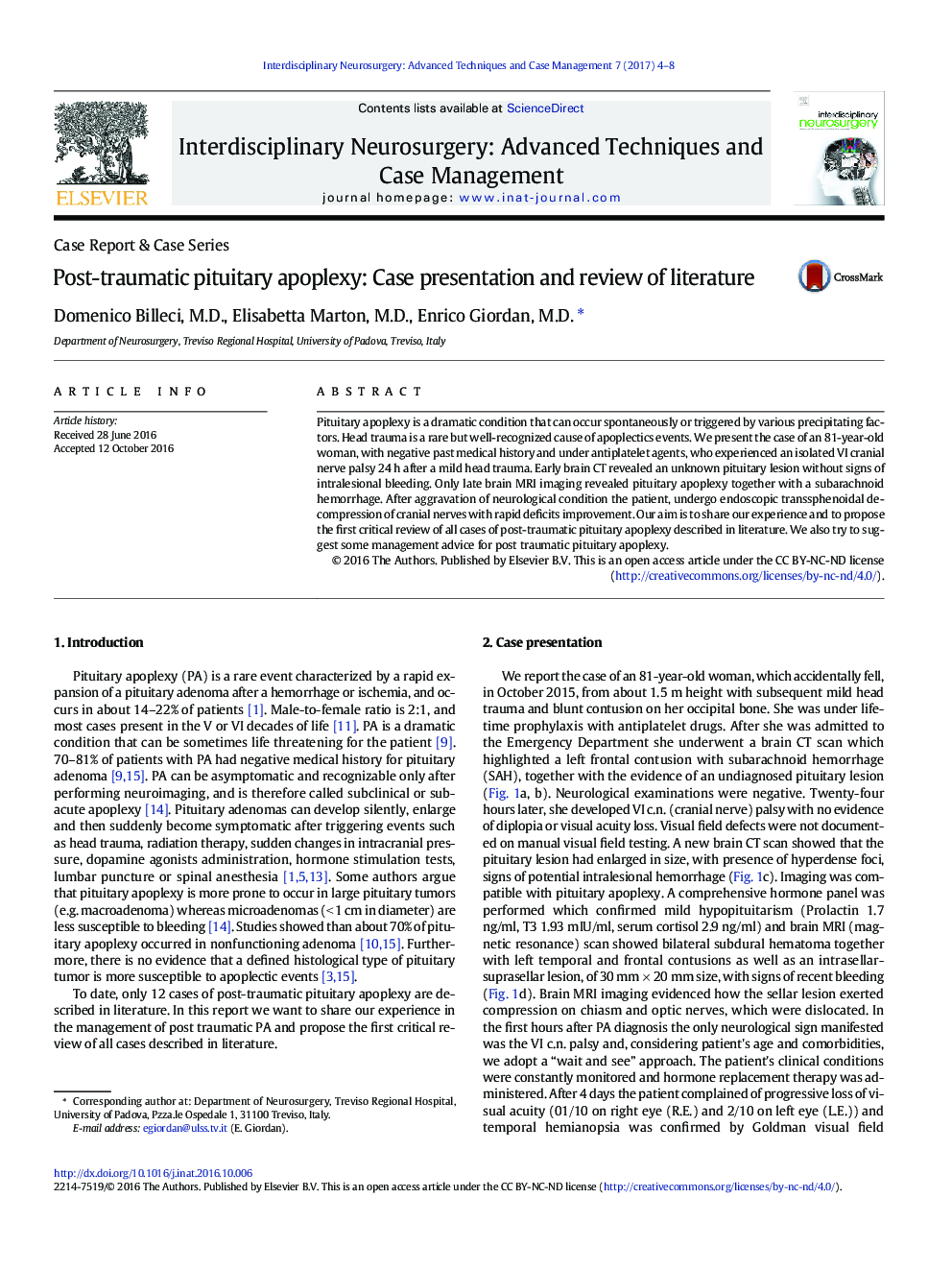| Article ID | Journal | Published Year | Pages | File Type |
|---|---|---|---|---|
| 5629477 | Interdisciplinary Neurosurgery | 2017 | 5 Pages |
â¢Head trauma could be a non negligible risk factor for pituitary apoplexy, with frequently the occurrence of a consistent delay from trauma to apoplectic event. Furthermore post-traumatic PA can be misdiagnosed with other neurological syndromes (SAH, meningism).â¢Even after a mild head trauma, head MRI scan should be performed in case of upper cranial nerve deficits or neurological deterioration even if head CT scan documented a sellar mass without signs of haemorragic / ischemic events.â¢Elderly patients, especially under anticoagulants/antiplatelets agents, with a medical history of pituitary adenoma should be aware about the risk of late ischemic/haemorragic events.â¢In case of post traumatic PA with acute and progressive neurological deficits trans-sphenoidal endoscopic decompression should be, if feasible, a mandatory treatment.
Pituitary apoplexy is a dramatic condition that can occur spontaneously or triggered by various precipitating factors. Head trauma is a rare but well-recognized cause of apoplectics events. We present the case of an 81-year-old woman, with negative past medical history and under antiplatelet agents, who experienced an isolated VI cranial nerve palsy 24Â h after a mild head trauma. Early brain CT revealed an unknown pituitary lesion without signs of intralesional bleeding. Only late brain MRI imaging revealed pituitary apoplexy together with a subarachnoid hemorrhage. After aggravation of neurological condition the patient, undergo endoscopic transsphenoidal decompression of cranial nerves with rapid deficits improvement. Our aim is to share our experience and to propose the first critical review of all cases of post-traumatic pituitary apoplexy described in literature. We also try to suggest some management advice for post traumatic pituitary apoplexy.
